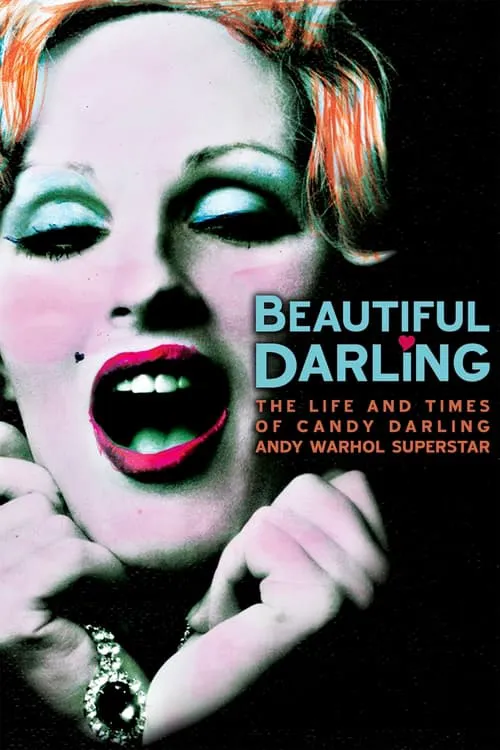Beautiful Darling

Plot
In a world where the boundaries of art and identity were constantly being pushed, one woman stood out for her unapologetic self-expression and fearless determination to live life on her own terms. Candy Darling, the iconic American Transgender actress and Warhol Superstar, left an indelible mark on the cultural landscape of the 1960s and 1970s, and James Rasin's documentary "Beautiful Darling" is a poignant tribute to her extraordinary life and career. Born as James Lawrence Slattery on June 24, 1944, in Brooklyn, New York, Candy Darling grew up surrounded by the vibrant streets and pulsating culture of the city. It was a world where identity was fluid, and where the lines between reality and fantasy were often blurred. Darling, as she later came to be known, was drawn to the world of theater and performance, where she could explore and express herself in ways that were both authentic and transformative. Darling's early career was marked by a series of small roles in Off-Broadway productions and TV appearances, which provided her with the opportunity to hone her craft and develop her unique stage presence. However, it was her association with Andy Warhol and the Factory, Warhol's infamous studio and salon, that propelled Darling to international stardom. Warhol, the enigmatic artist and provocateur, was captivated by Darling's beauty, intelligence, and unwavering determination, and he quickly recognized her as one of his most talented and charismatic Superstars. The Factory, with its constant flux of artistic experimentation and countercultural upheaval, was the perfect incubator for Darling's talents. It was here that she appeared in a number of Warhol's early films, including "Flesh" (1968) and "Women in Revolt" (1972), which cemented her status as a key figure in the New York City art scene. Darling's performances were characterized by their raw energy, unflinching honesty, and unapologetic self-exposure, which both captivated and intimidated audiences. As Darling's fame grew, so did her reputation as a bold and unapologetic iconoclast. Her interviews and performances were marked by a fierce wit, intelligence, and a deep commitment to the rights and freedoms of marginalized communities. Darling's unwavering dedication to her art and her identity was a powerful inspiration to countless young people who were seeking to challenge social norms and break free from the constraints of traditional expectations. Despite her remarkable achievements, Darling's life was not without its challenges and hardships. She struggled with addiction, poverty, and the constant scrutiny of the public eye, which often reduced her to mere caricature or spectacle. In the late 1970s, Darling's fortunes began to decline, and she eventually succumbed to illness and circumstance, passing away on March 21, 1974, at the tender age of 29. "Beautiful Darling" is a poignant and intimate tribute to Candy Darling's extraordinary life and career. Director James Rasin's film is a loving and meticulously researched exploration of Darling's world, which draws upon a vast array of archival materials, including rarely seen interview footage, photographs, and film extracts. The documentary also features interviews with Darling's friends, colleagues, and family members, who provide a wealth of insight into her personality, creativity, and enduring impact. Throughout the documentary, Rasin reveals Darling to be a complex and multifaceted individual, whose life was marked by both triumph and tragedy. We see her in all her beauty and vulnerability, as she navigates the highs and lows of the art world, the constant flux of identities and expectations, and the often-brutal realities of a life lived in the public eye. And yet, despite the numerous challenges and hardships that Darling faced, her spirit remains unbroken, her passion and creativity undiminished. In the end, "Beautiful Darling" is a powerful celebration of Candy Darling's boundless energy, her unwavering dedication to her art, and her unshakeable commitment to living life on her own terms. It is a film that reminds us of the enduring power of the human spirit, and the ways in which art can transcend borders, boundaries, and even mortality. As Darling herself once said, "The most beautiful thing I know is, when the heart is at peace, and I think that's what love is all about."
Reviews
Recommendations




